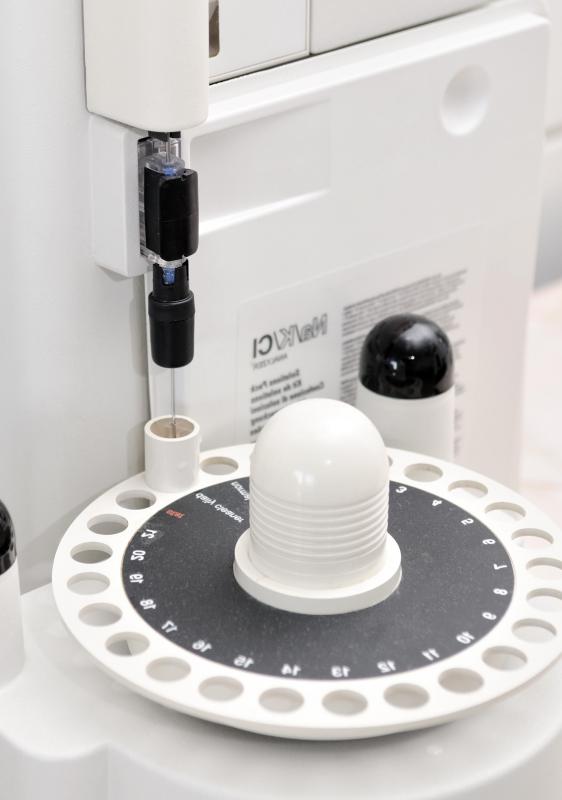At WiseGEEK, we're committed to delivering accurate, trustworthy information. Our expert-authored content is rigorously fact-checked and sourced from credible authorities. Discover how we uphold the highest standards in providing you with reliable knowledge.
What is Blood Plasma Donation?
Blood plasma donation occurs when a person donates their plasma through a process called, plasmapheresis, which takes place most often at a blood plasma donation center or donor center. The plasma that is collected from these donor centers is used to make plasma protein therapies which are used to treat many rare diseases and disorders. Some of the conditions that blood plasma donations have helped to treat are: bleeding disorders, immune system deficiencies, burns, shock, trauma, hepatitis and more.
The first step of blood plasma donation or plasmapheresis is removing the blood from the donor’s body. The blood is drawn from the arm through a sterile tube while it collects in a centrifuge. Next, the blood is spun in the centrifuge and it separates into three components: red blood cells, platelets and plasma. The plasma is removed from the mixture and replaced with sterile saline solution and then returned to the body.

Blood plasma donation takes about an hour and a half after the initial visit. The first visit takes longer because a donor must give a complete medical history and also be tested for transmissible viruses, such as syphilis, hepatitis and Human immunodeficiency Virus (HIV). If a donor exhibits high risk behavior, drug screening will most likely take place. Additionally, donors must be at least eighteen years old and weight 110 lbs. (50 kg in Europe). The initial visit will usually take about two and half or three hours.

Rules about blood plasma donation frequencies and amounts vary greatly. The United States is the least restrictive with no yearly limits and other countries in Europe have yearly limits. In the United States, donors cannot donate plasma more than two times in seven days and there must be a two day resting period in between. This is because the body needs that time to replenish the lost plasma from the previous blood plasma donation.

Some people have side effects during blood plasma donation. Common side effects include, but are not limited to shock, convulsions, dizziness or fainting. The best way to avoid any side effects is to eat a healthy meal and drink a good amount of water three or four hours prior to donating plasma.
Because the need for blood plasma donation grows every year, donor centers offer compensation for the time spent donating plasma. Some donor centers issue checks and others issue cash at the time of donation. Compensation varies between different donor centers.
AS FEATURED ON:
AS FEATURED ON:














Discuss this Article
Post your comments